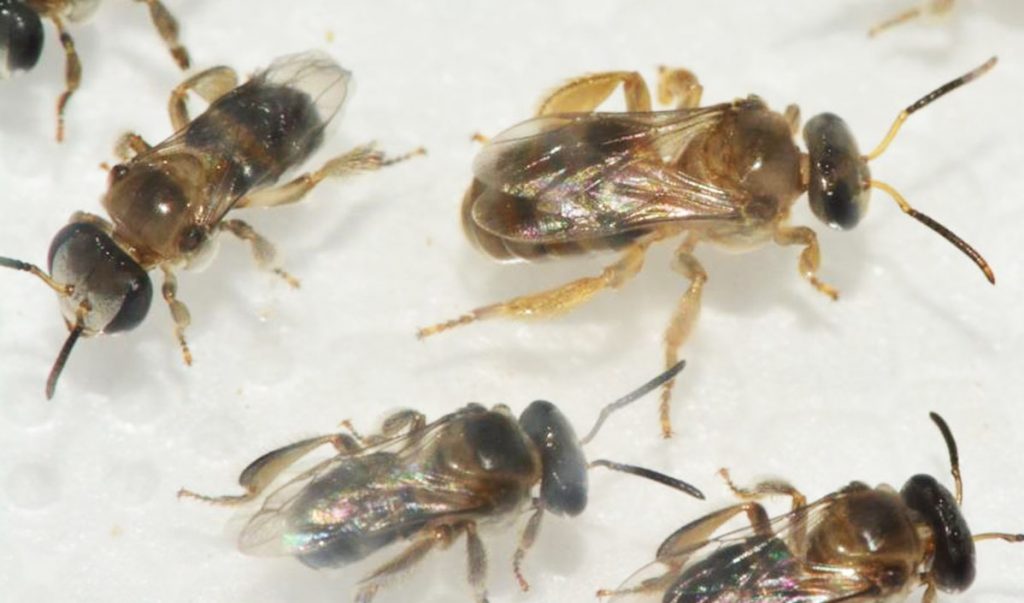Some Australian stingless bee keepers have observed young queens inside the nest with “passenger” bees on their abdomens. Are these observations of males and queens mating inside the nest? Current evidence from Australian and overseas suggests that stingless bees, like other bees and their close relatives the ants and wasps, only mate during flight.
Stingless bee virgin queens go on a nuptial flight, during which they mate with a drone and then return to the nest. But nature is variable and complex so, in some species, some of the time, different forms of mating may occur. In other words, while it is possible that some Australian stingless bee species are capable of mating in the nest, other explanations for these observations should be ruled out first.
One challenge for even the keenest observers is that it can be difficult to distinguish males from workers in our Australian Tetragonula bees (see image below). Although this distinction is a little easier in the other Australian stingless bee genus, Austroplebeia, in which the males have yellow legs while the female worker’s legs are black. Young queens, both pre- and post- mating flights, attract a great deal of attention from their sisters. The videos we have seen appear to show workers, not males, as the queen’s “passengers”, based on the presence of large mandibles and pollen baskets (which males lack). These workers may be harassing or killing a virgin queen no longer required by the colony. Such aggressive behaviour often involves mounting from behind, and so can be mistaken for mating.
We therefore think worker-queen interactions explain the images we have observed so far.
That said, we have ourselves observed that males will sometimes attempt to mount virgin queens while both are walking. We’ve also seen a number of videos online showing males crowding around walking virgin queens on the ground, but successful copulation has never been confirmed. Queens can resist mating. She can shrug off mating attempts by overzealous males. A genuine and indisputable mating can be confirmed by collecting the queen and looking for the mating plug and/or by collecting the males and showing they have lost their genitalia (in the process of mating a significant part of the male’s genitalia is ripped from his body and remains in the female as a mating plug).
Please keep the videos coming if you observe what you think is mating in the nest. If it does occur, it would be an interesting deviation from the norm for stingless bees, and a fascinating new behaviour for our bees! And if the videos instead show worker agitation or aggression towards queens, this is also fascinating, and the process is relatively poorly understood.
You may ask why mating has evolved to take place out-side the nest? We expect this is because it reduces the serious risk of mating with a brother. The males in swarms near requeening colonies of stingless bees do not contain the males of that colony (brothers) but other colonies (less closely related). By choosing a mate from that congregation a queen has a good chance of finding a compatible but unrelated mate.
Tim Heard, Ros Gloag, Toby Smith, Giorgio Venturieri and Francisco Garcia Bulle Bueno

